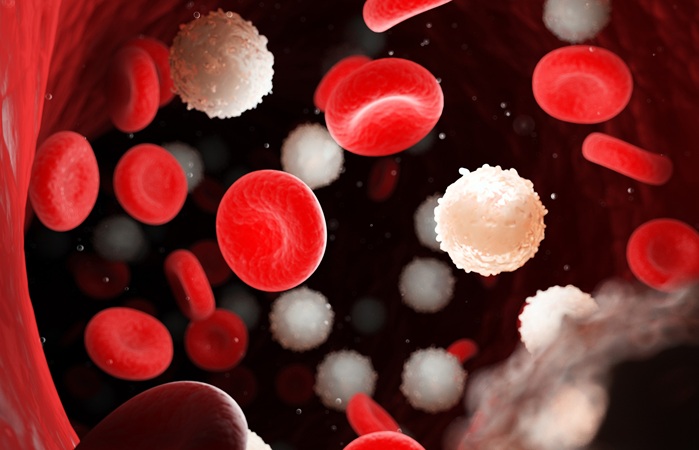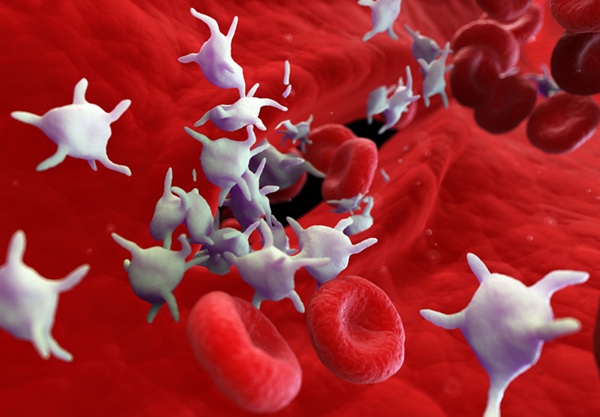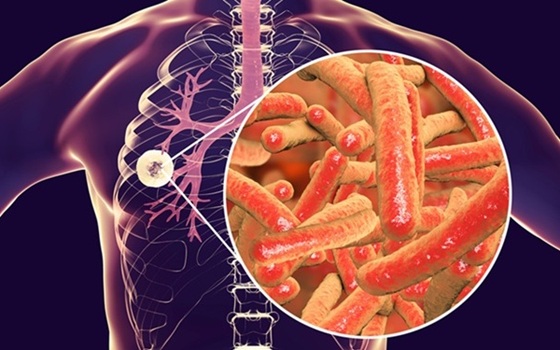Light-Sensitive Nanoparticles Designed for Smart Drug Release
|
By LabMedica International staff writers Posted on 14 Feb 2018 |
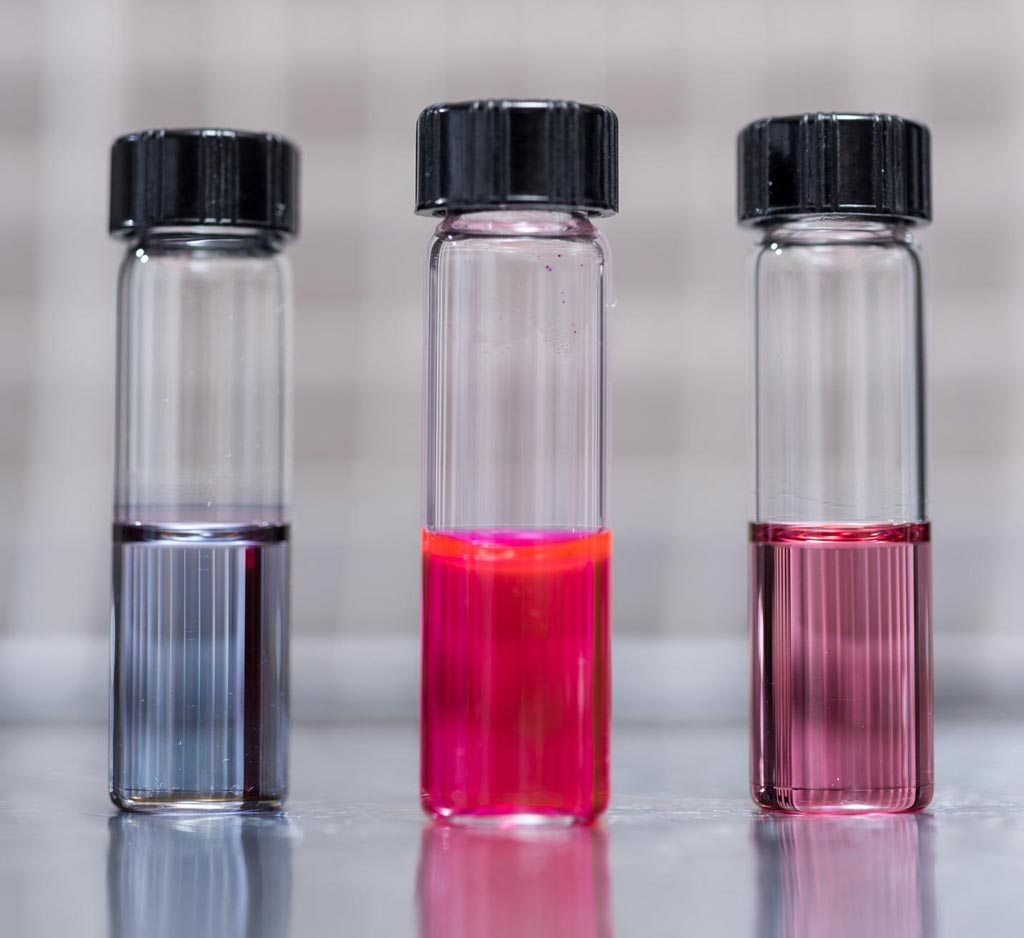
Image: Vials containing samples of \"hairy\" nanoparticles: the right and left vials contain photo-responsive polymer-capped gold nanoparticles prior to and after self-assembly, respectively. The center vial shows dye released from self-assembled gold nanoparticles. The nanoparticles were made with light-sensitive materials that assembled and disassembled themselves when exposed to light of different wavelengths (Photo courtesy of Rob Felt, Georgia Institute of Technology).
A novel type of "smart" nanoparticles responds to light of specific wavelengths that causes the particles to assemble or disassemble, which enables the dynamic organization of the nanoparticles for in vitro drug release.
The ability to dynamically organize functional nanoparticles (NPs) via the use of environmental triggers (temperature, pH, light, or solvent polarity) opens up important perspectives for rapid and convenient construction of a rich variety of complex assemblies and materials with new structures and functionalities.
In a study published in the January 31, 2018, online edition of the journal Proceedings of the [U.S.] National Academy of Sciences, investigators at the Georgia Institute of Technology (Atlanta, USA) described an unconventional strategy for crafting stable "hairy" NPs with light-enabled reversible and reliable self-assembly and tunable optical properties.
The "hairy" nanoparticles were fabricated around a tiny core of beta-cyclodextrin from which polymer chains of poly(acrylicacid)-block-poly(7-methylacryloyloxy-4-methylcoumarin) (PAA-b-PMAMC) were grown. This compound attracted water-soluble metal precursors, which utilized the space within the polymer hairs as nano-reactors to form gold nanoparticles. The investigators then added hairs made from the light sensitive hydrophobic monomer MAMC.
Light at a wavelength of 365 nanometers induced the nanoparticles to self-assemble through a photo-dimerization process, while the process was reversed when the particles were exposed to light at 254 nanometers.
“Under light, the assemblies of photo-sensitive nanoparticles separate over a period of hours at a rate that can be controlled by the intensity and wavelength of the light,” said senior author Dr. Zhiqun Lin, professor of materials science and engineering at the Georgia Institute of Technology. “Because the disassembly can be turned on and off at will, we could provide a timed release of the drug by controlling the short-wavelength light exposure. Once the polymer chains from adjacent gold nanoparticles begin to photo-crosslink, they bring nanoparticles together via a self-assembly process to generate large assemblies of nanoparticles. This process is completely reversible and can be repeated in many cycles.”
“We envision that these photo-responsive polymer-capped gold nanoparticles could one day serve as nano-carriers for drug delivery into the body using our robust and reversible process for assembly and disassembly,” said Dr. Lin. “Used in cancer therapy, this process could increase the impact of a treatment by heating the cancer cells while introducing the drug compound into the tumor.”
Related Links:
Georgia Institute of Technology
The ability to dynamically organize functional nanoparticles (NPs) via the use of environmental triggers (temperature, pH, light, or solvent polarity) opens up important perspectives for rapid and convenient construction of a rich variety of complex assemblies and materials with new structures and functionalities.
In a study published in the January 31, 2018, online edition of the journal Proceedings of the [U.S.] National Academy of Sciences, investigators at the Georgia Institute of Technology (Atlanta, USA) described an unconventional strategy for crafting stable "hairy" NPs with light-enabled reversible and reliable self-assembly and tunable optical properties.
The "hairy" nanoparticles were fabricated around a tiny core of beta-cyclodextrin from which polymer chains of poly(acrylicacid)-block-poly(7-methylacryloyloxy-4-methylcoumarin) (PAA-b-PMAMC) were grown. This compound attracted water-soluble metal precursors, which utilized the space within the polymer hairs as nano-reactors to form gold nanoparticles. The investigators then added hairs made from the light sensitive hydrophobic monomer MAMC.
Light at a wavelength of 365 nanometers induced the nanoparticles to self-assemble through a photo-dimerization process, while the process was reversed when the particles were exposed to light at 254 nanometers.
“Under light, the assemblies of photo-sensitive nanoparticles separate over a period of hours at a rate that can be controlled by the intensity and wavelength of the light,” said senior author Dr. Zhiqun Lin, professor of materials science and engineering at the Georgia Institute of Technology. “Because the disassembly can be turned on and off at will, we could provide a timed release of the drug by controlling the short-wavelength light exposure. Once the polymer chains from adjacent gold nanoparticles begin to photo-crosslink, they bring nanoparticles together via a self-assembly process to generate large assemblies of nanoparticles. This process is completely reversible and can be repeated in many cycles.”
“We envision that these photo-responsive polymer-capped gold nanoparticles could one day serve as nano-carriers for drug delivery into the body using our robust and reversible process for assembly and disassembly,” said Dr. Lin. “Used in cancer therapy, this process could increase the impact of a treatment by heating the cancer cells while introducing the drug compound into the tumor.”
Related Links:
Georgia Institute of Technology
Latest BioResearch News
- Genome Analysis Predicts Likelihood of Neurodisability in Oxygen-Deprived Newborns
- Gene Panel Predicts Disease Progession for Patients with B-cell Lymphoma
- New Method Simplifies Preparation of Tumor Genomic DNA Libraries
- New Tool Developed for Diagnosis of Chronic HBV Infection
- Panel of Genetic Loci Accurately Predicts Risk of Developing Gout
- Disrupted TGFB Signaling Linked to Increased Cancer-Related Bacteria
- Gene Fusion Protein Proposed as Prostate Cancer Biomarker
- NIV Test to Diagnose and Monitor Vascular Complications in Diabetes
- Semen Exosome MicroRNA Proves Biomarker for Prostate Cancer
- Genetic Loci Link Plasma Lipid Levels to CVD Risk
- Newly Identified Gene Network Aids in Early Diagnosis of Autism Spectrum Disorder
- Link Confirmed between Living in Poverty and Developing Diseases
- Genomic Study Identifies Kidney Disease Loci in Type I Diabetes Patients
- Liquid Biopsy More Effective for Analyzing Tumor Drug Resistance Mutations
- New Liquid Biopsy Assay Reveals Host-Pathogen Interactions
- Method Developed for Enriching Trophoblast Population in Samples
Channels
Clinical Chemistry
view channel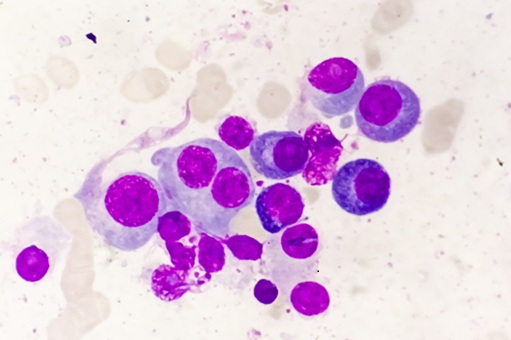
Mass Spectrometry-Based Monitoring Technique to Predict and Identify Early Myeloma Relapse
Myeloma, a type of cancer that affects the bone marrow, is currently incurable, though many patients can live for over 10 years after diagnosis. However, around 1 in 5 individuals with myeloma have a high-risk... Read more
‘Brilliantly Luminous’ Nanoscale Chemical Tool to Improve Disease Detection
Thousands of commercially available glowing molecules known as fluorophores are commonly used in medical imaging, disease detection, biomarker tagging, and chemical analysis. They are also integral in... Read more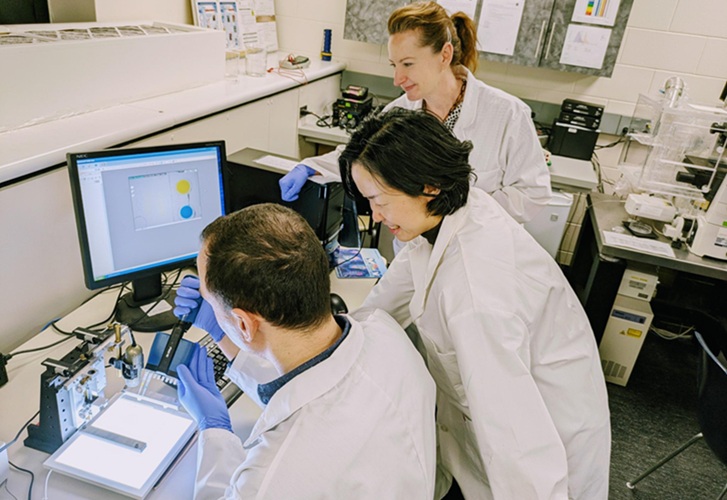
Low-Cost Portable Screening Test to Transform Kidney Disease Detection
Millions of individuals suffer from kidney disease, which often remains undiagnosed until it has reached a critical stage. This silent epidemic not only diminishes the quality of life for those affected... Read more
New Method Uses Pulsed Infrared Light to Find Cancer's 'Fingerprints' In Blood Plasma
Cancer diagnoses have traditionally relied on invasive or time-consuming procedures like tissue biopsies. Now, new research published in ACS Central Science introduces a method that utilizes pulsed infrared... Read moreMolecular Diagnostics
view channel
Genetic-Based Tool Predicts Survival Outcomes of Pancreatic Cancer Patients
A tumor marker is a substance found in the body that may signal the presence of cancer. These substances, which can include proteins, genes, molecules, or other biological compounds, are either produced... Read more
Urine Test Diagnoses Early-Stage Prostate Cancer
Prostate cancer is one of the leading causes of death among men worldwide. A major challenge in diagnosing the disease is the absence of reliable biomarkers that can detect early-stage tumors.... Read moreHematology
view channel
New Scoring System Predicts Risk of Developing Cancer from Common Blood Disorder
Clonal cytopenia of undetermined significance (CCUS) is a blood disorder commonly found in older adults, characterized by mutations in blood cells and a low blood count, but without any obvious cause or... Read more
Non-Invasive Prenatal Test for Fetal RhD Status Demonstrates 100% Accuracy
In the United States, approximately 15% of pregnant individuals are RhD-negative. However, in about 40% of these cases, the fetus is also RhD-negative, making the administration of RhoGAM unnecessary.... Read moreImmunology
view channel
Stem Cell Test Predicts Treatment Outcome for Patients with Platinum-Resistant Ovarian Cancer
Epithelial ovarian cancer frequently responds to chemotherapy initially, but eventually, the tumor develops resistance to the therapy, leading to regrowth. This resistance is partially due to the activation... Read more
Machine Learning-Enabled Blood Test Predicts Immunotherapy Response in Lymphoma Patients
Chimeric antigen receptor (CAR) T-cell therapy has emerged as one of the most promising recent developments in the treatment of blood cancers. However, over half of non-Hodgkin lymphoma (NHL) patients... Read moreMicrobiology
view channel
New Test Diagnoses Bacterial Meningitis Quickly and Accurately
Bacterial meningitis is a potentially fatal condition, with one in six patients dying and half of the survivors experiencing lasting symptoms. Therefore, rapid diagnosis and treatment are critical.... Read more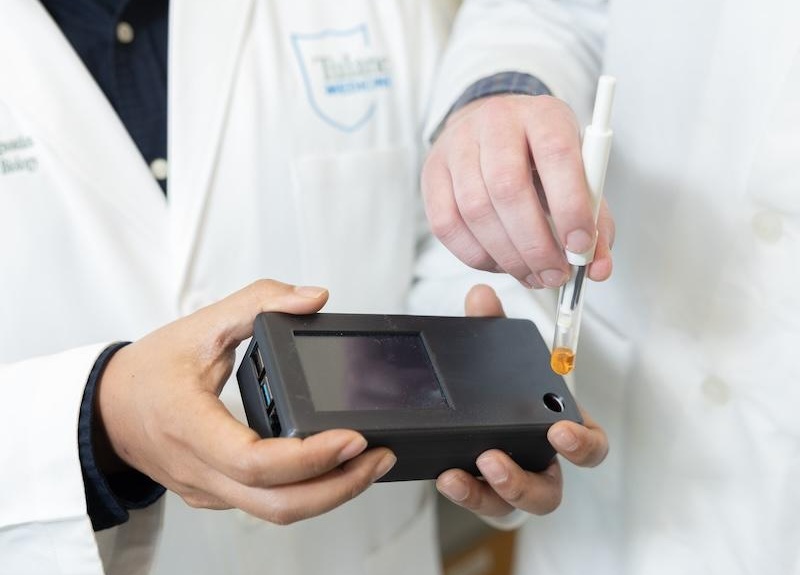
Handheld Device Delivers Low-Cost TB Results in Less Than One Hour
Tuberculosis (TB) remains the deadliest infectious disease globally, affecting an estimated 10 million people annually. In 2021, about 4.2 million TB cases went undiagnosed or unreported, mainly due to... Read more
New AI-Based Method Improves Diagnosis of Drug-Resistant Infections
Drug-resistant infections, particularly those caused by deadly bacteria like tuberculosis and staphylococcus, are rapidly emerging as a global health emergency. These infections are more difficult to treat,... Read more
Breakthrough Diagnostic Technology Identifies Bacterial Infections with Almost 100% Accuracy within Three Hours
Rapid and precise identification of pathogenic microbes in patient samples is essential for the effective treatment of acute infectious diseases, such as sepsis. The fluorescence in situ hybridization... Read morePathology
view channel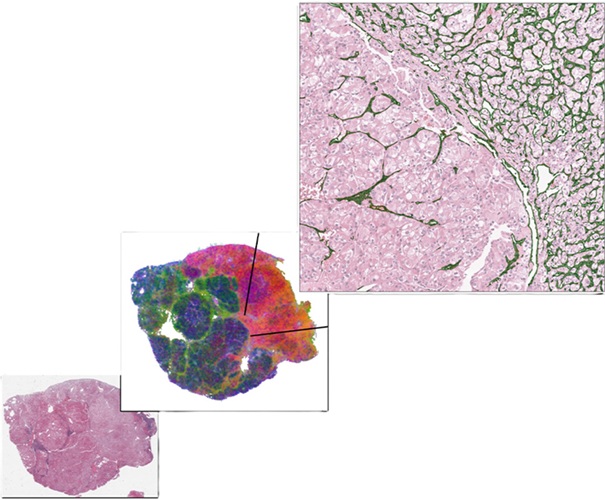
AI-Based Model Predicts Kidney Cancer Therapy Response
Each year, nearly 435,000 individuals are diagnosed with clear cell renal cell carcinoma (ccRCC), making it the most prevalent subtype of kidney cancer. When the disease spreads, anti-angiogenic therapies... Read more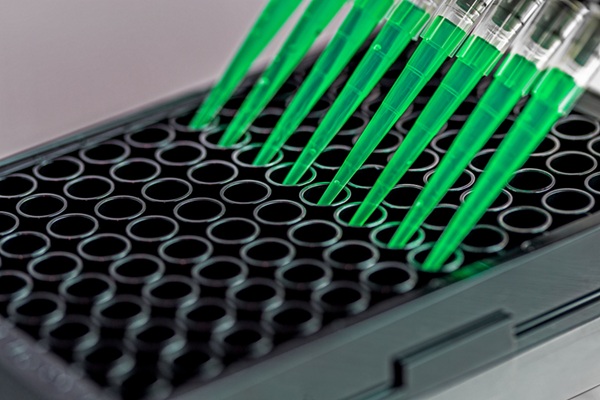
Sensitive and Specific DUB Enzyme Assay Kits Require Minimal Setup Without Substrate Preparation
Ubiquitination and deubiquitination are two important physiological processes in the ubiquitin-proteasome system, responsible for protein degradation in cells. Deubiquitinating (DUB) enzymes contain around... Read moreTechnology
view channel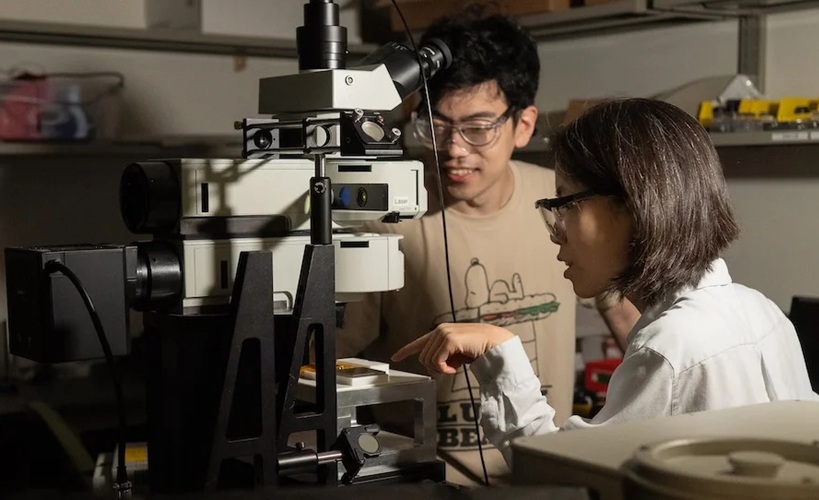
Light Signature Algorithm to Enable Faster and More Precise Medical Diagnoses
Every material or molecule interacts with light in a unique way, creating a distinct pattern, much like a fingerprint. Optical spectroscopy, which involves shining a laser on a material and observing how... Read more
Disposable Microchip Technology Could Selectively Detect HIV in Whole Blood Samples
As of the end of 2023, approximately 40 million people globally were living with HIV, and around 630,000 individuals died from AIDS-related illnesses that same year. Despite a substantial decline in deaths... Read more
Pain-On-A-Chip Microfluidic Device Determines Types of Chronic Pain from Blood Samples
Chronic pain is a widespread condition that remains difficult to manage, and existing clinical methods for its treatment rely largely on self-reporting, which can be subjective and especially problematic... Read more
Innovative, Label-Free Ratiometric Fluorosensor Enables More Sensitive Viral RNA Detection
Viruses present a major global health risk, as demonstrated by recent pandemics, making early detection and identification essential for preventing new outbreaks. While traditional detection methods are... Read moreIndustry
view channel
Cepheid and Oxford Nanopore Technologies Partner on Advancing Automated Sequencing-Based Solutions
Cepheid (Sunnyvale, CA, USA), a leading molecular diagnostics company, and Oxford Nanopore Technologies (Oxford, UK), the company behind a new generation of sequencing-based molecular analysis technologies,... Read more
Grifols and Tecan’s IBL Collaborate on Advanced Biomarker Panels
Grifols (Barcelona, Spain), one of the world’s leading producers of plasma-derived medicines and innovative diagnostic solutions, is expanding its offer in clinical diagnostics through a strategic partnership... Read more







 Assay.jpg)





